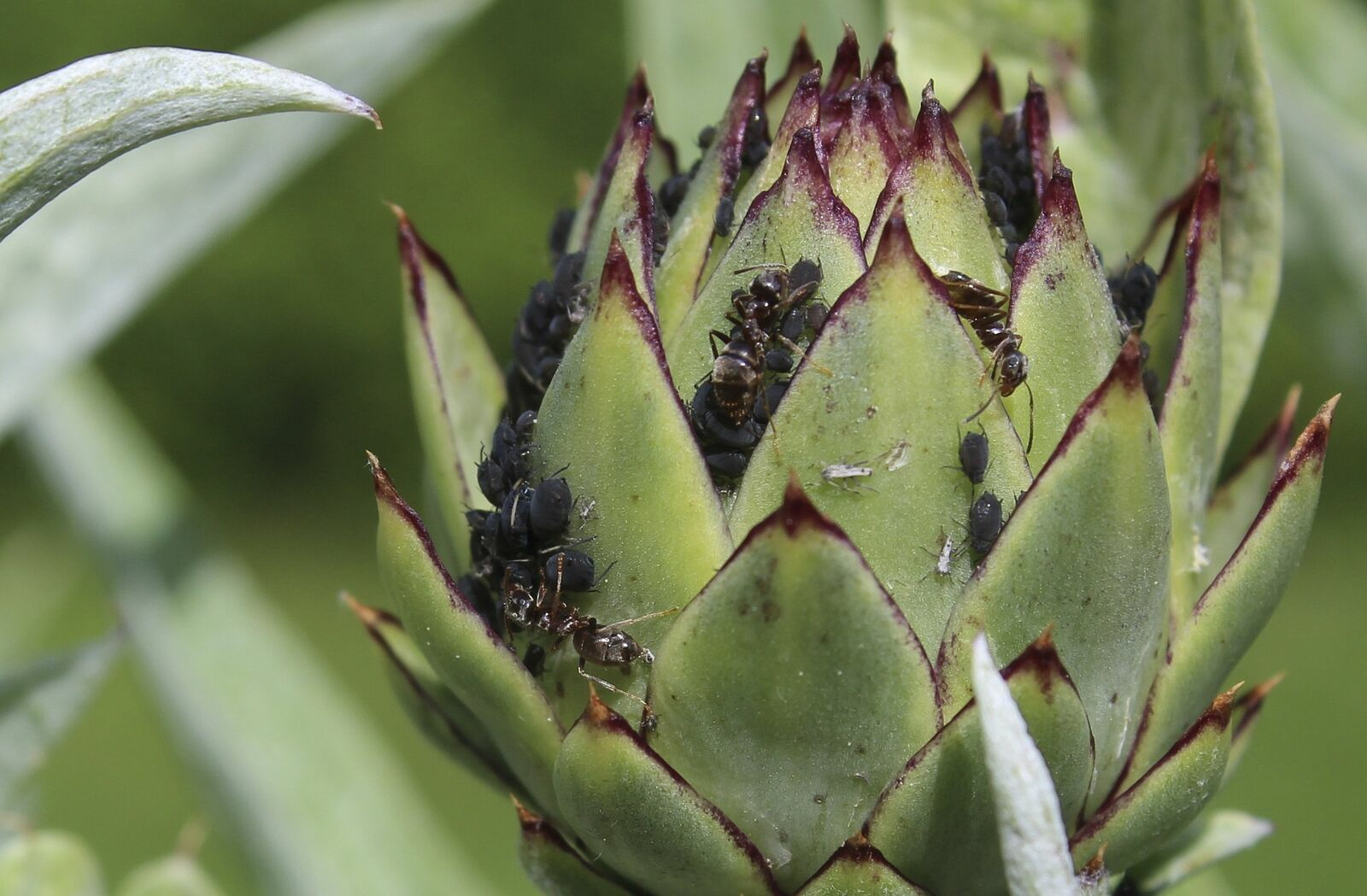
How to Prevent and Get Rid of Aphids: Natural Home Remedies
Aphids are unfortunately frequent guests in our gardens and they can cause considerable damage to your plants. In this article, you will find out what types of aphids there are and how you can control and prevent them.
This Article Contains:
- Recognize Aphids: What Do Aphids Look Like?
- Aphids on Plants: Where Do Aphids Come From?
- Aphids and Ants
- Home Remedies Against Aphids
- How to Get Rid of Aphids Naturally With Plant Juices & Teas
- Fighting Aphids Naturally: Mixed Cultivation Against Aphids
- Plants Against Aphids: Companion Planting Table
- Beneficial Insects Against Aphids: Who Eats Aphids?
- Frequently Asked Questions About Aphid Control & Prevention
Quick Overview
How to Get Rid of Aphids?
- Collect or spray with water.
- For light infestations, spray with black tea or teas made from oregano, nettles or garlic.
- Plant mixed crops with garlic and onions or herbs such as chervil, lavender, sage, rosemary, thyme and hyssop.
- Encourage beneficial insects (e.g. ladybugs, lacewings, hoverflies & birds).
- Spray a mixture of neem oil and water on plants (approx. 1 teaspoon per 1 L/2.1 pt of water).
- Strengthen your plants' defenses with plant dips.
- In case of heavy infestation, spray with soapy water (try other methods first, can also damage plants).
- If ants are present, they should also be driven away, as they also drive away or kill beneficial insects in order to protect the aphids.
Recognize Aphids: What Do Aphids Look Like?
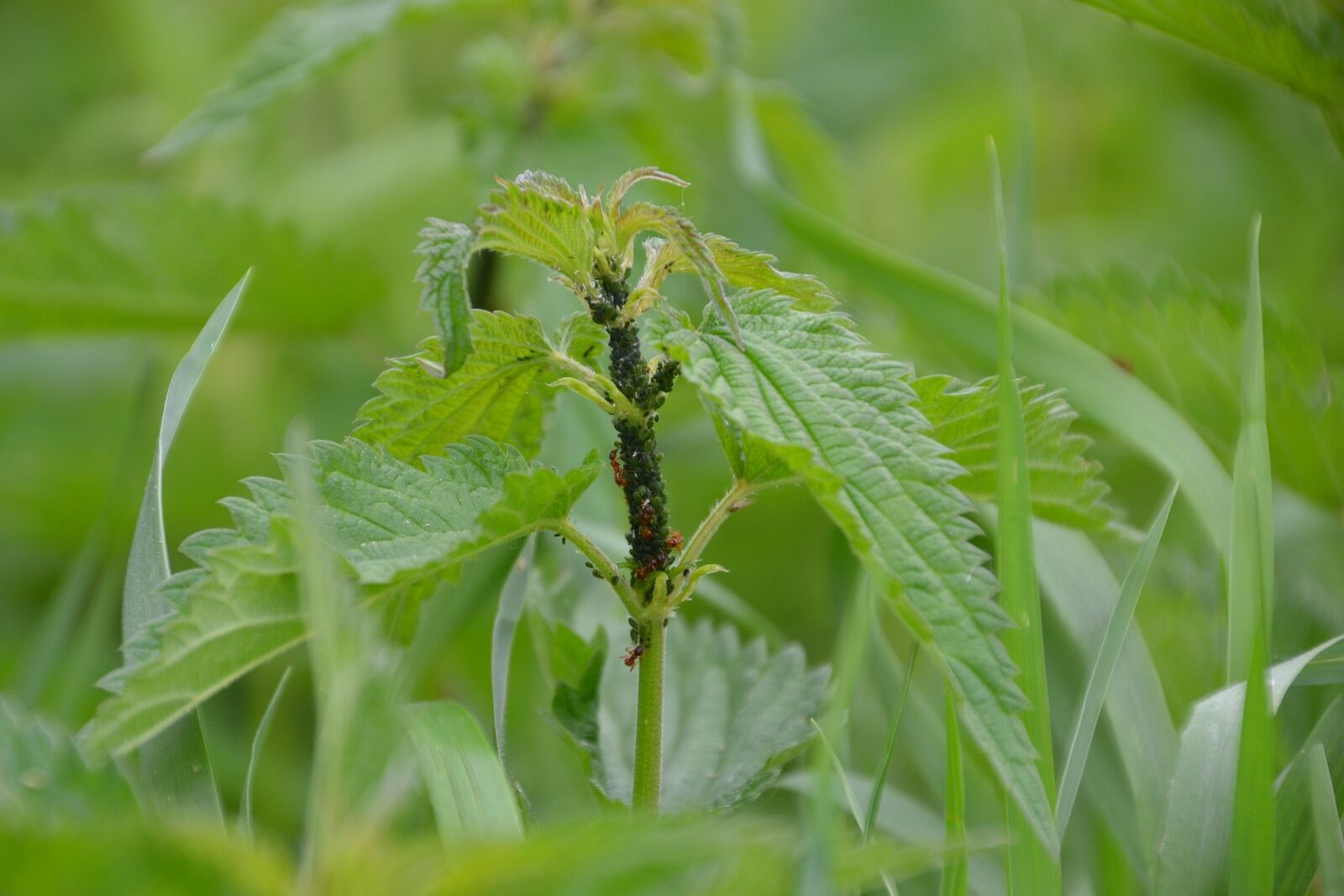
Aphids (Aphidoidea) are one of the most common pests in our gardens. From shrubs, trees, flowers and vegetable plants, nothing is safe from them. The aphids are only a few millimeters/inches in size and appear in large groups. Some are even winged and particularly like to prey on roses and oleander, but also vegetable plants. They use a sting to suck nutrients and sugar from your plants. This weakens them and makes them more susceptible to diseases. Viral and fungal diseases can also be transmitted to your plants via aphids. The honeydew that aphids excrete promotes the development of fungal diseases such as black sooty mold.
From green to yellow to black, there are numerous species of aphids (around 5000 species in total). We will briefly introduce you to some of the most common species for plants in your garden below. When it comes to controlling aphids, however, it doesn't matter which species they are, as they can all be controlled in the same way.
Black Aphids
Black aphids are quite conspicuous and you will quickly recognize an infestation of aphids on your plants. Black aphids infesting crops in your garden, for example, are common:
- Black bean aphid (beans, clematis, dahlias, nasturtiums, potatoes, poppies, marigolds & turnips)
- Apple aphid (apple, pear & quince trees)
- Black cherry aphid (eyebright, speedwell, bedstraw, sour cherries & sweet cherries)
- Black snowball aphid (snowball), mealy apple aphid & mealy cabbage aphid
Green Aphids
There are numerous species of green aphids. They are sometimes more difficult to spot due to their coloration. However, as they occur in large groups, you should still notice them quite quickly. Common green aphids include the following:
- Large rose aphid (roses, apple & pear trees and strawberries)
- Green peach aphid (peach, sloes, potatoes), green apple aphid, large plum aphid & Sitka spruce aphid
- Green cucumber aphid, green pea aphid (legumes), spotted potato aphid & green-striped potato aphid
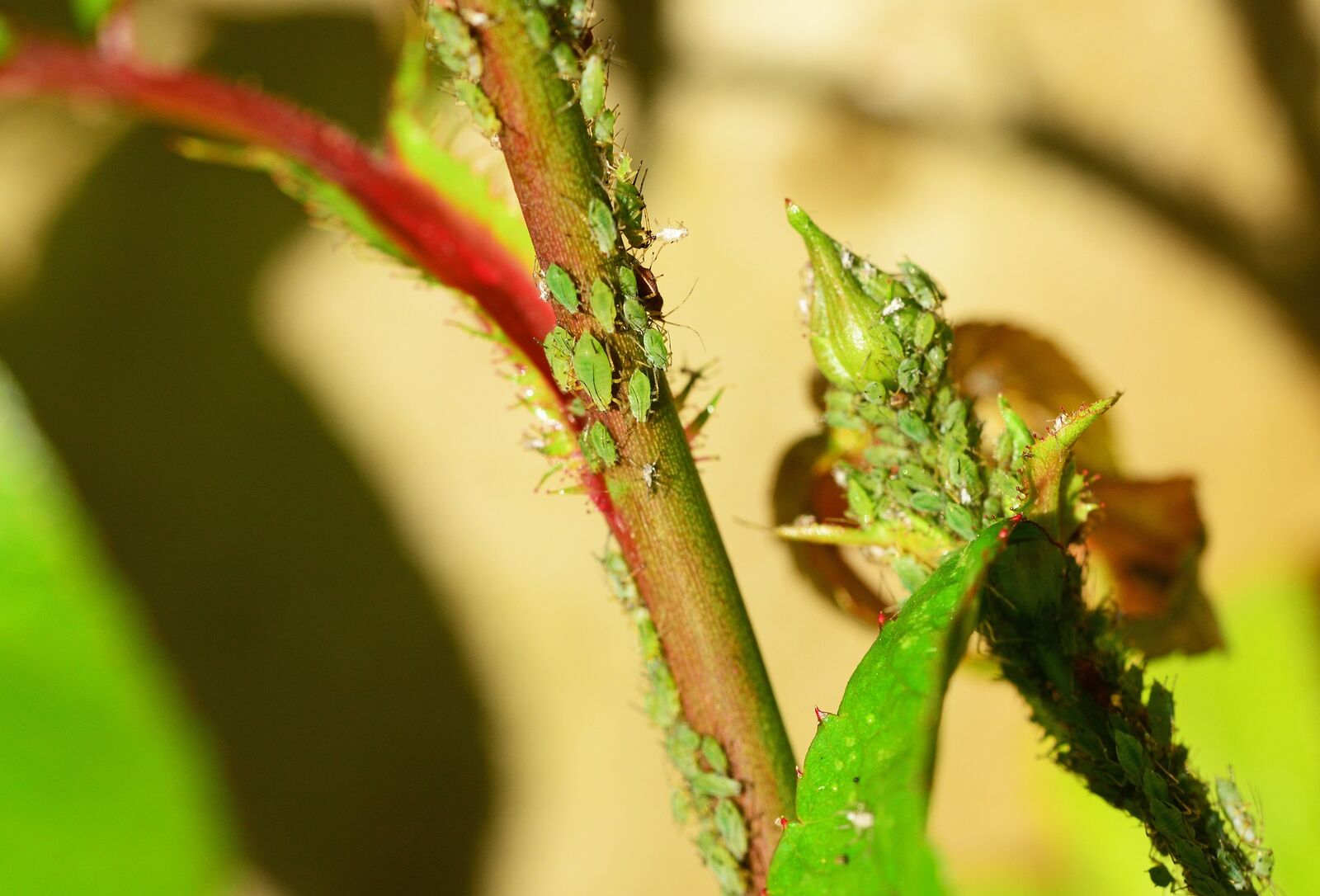
Aphids on Plants: Where Do Aphids Come From?
Aphids in your garden get onto your plants in various ways. They can already be present on plants you have brought with you, but sometimes the pests also hide in potting soil. However, aphids often come from neighboring gardens and migrate to your plants. They are often found on the tips of shoots and the underside of leaves. If the infestation is already advanced, you will quickly discover them on your entire plant.
However, over-fertilization (especially with nitrogen) or under-fertilization can also encourage aphids on your plants. If your plants receive too many nutrients too quickly, they will grow a lot in a short time, but the cell walls will remain quite thin and weak. If too few nutrients are available, the plants' defenses are weak and an infestation often leads to weakening or even death of the plants.
Aphids and Ants

Aphids and ants have an interesting relationship. Aphids suck sugar from the plants they infest. A large proportion of this sugar is then excreted by the aphids as honeydew. The sugar-rich dew is very tasty for other insects and ants are particularly fond of the juice. They therefore even "milk" the aphids to obtain more dew. In return, the ants defend the aphids against predators such as lacewings, ladybugs, parasitic wasps, hoverflies and predatory bugs.

Find out More About Pests in the Garden
We have compiled an overview of common pests in the garden and explain how you can get rid of them. If the symptoms on your plant do not match aphids, you may find out what has infested your plant here.
Read More HereHome Remedies Against Aphids
There are many methods to get rid of aphids. The quickest way to get rid of aphids is to collect and crush them or cut off heavily infested shoots and dispose of them in the bin. Spraying with a strong jet of water - only on stable plants - can also help to remove the aphids from your plants. We do not recommend insecticides, as they often harm not only aphids but also other insects.
You can also apply rock dust to your plants. The aphids should rub themselves against the flour and bleed to death. Rock flour also helps against other diseases and pests and improves the soil. You can find out how to use rock flour in the garden in our article Using Rock Flour in the Garden.
As a general rule, home remedies should not only be used once, but should be repeated regularly. One treatment is often not enough to get rid of the aphids, as many methods have a rather mild effect.
Coffee Grounds Against Aphids
Coffee grounds can be used as a mulching material for frequently infested plants. The coffee grounds should be dried beforehand and used in moderation. A broth made from coffee grounds can also help. However, it should be quite strong so that it is effective against the aphids. To do this, simply brew used coffee grounds a second time. For the amount of coffee grounds, use a strong brewed coffee as a guide. As the caffeine in coffee repels aphids, you should only use coffee containing caffeine.
A mixture of 200 ml/7 fl. oz. water and 100 ml/3.5 fl. oz. milk with approx. 2 drops of lavender oil is also said to help against aphids. You should spray the milk and water mixture on the affected plants every 3 - 4 days.
Soft Soap Against Aphids
Soft soap helps with heavy aphid infestations. To do this, add approx. 20 g/0.7 fl. oz. of soap to 1 L/2.1 pt of water and spray the plants with it. You should only use soft soap and no other soaps, as these often contain microplastics, perfume or other additives. They are also often not biodegradable. You should also be careful with the lye. It can also harm your plants. It is therefore best to try other home remedies or methods first.
Neem Oil as a Household Remedy Against Aphids
Neem oil is not only an effective household remedy for aphids, but also for mildew and other fungal diseases. At the same time, the oil is ecologically and naturally produced and does not harm other animals or insects. You can buy neem oil as a ready-made mixture or as pure oil in garden centers or online. It should be used sparingly. Only dissolve approx. 1 teaspoon of oil in 1 L/2.1 pt of water and spray it on your plants. However, you should not spray your plants with the mixture on very sunny days or when it is raining. The sun's rays in combination with the oil can cause burns to the plants.
How to Get Rid of Aphids Naturally With Plant Juices & Teas
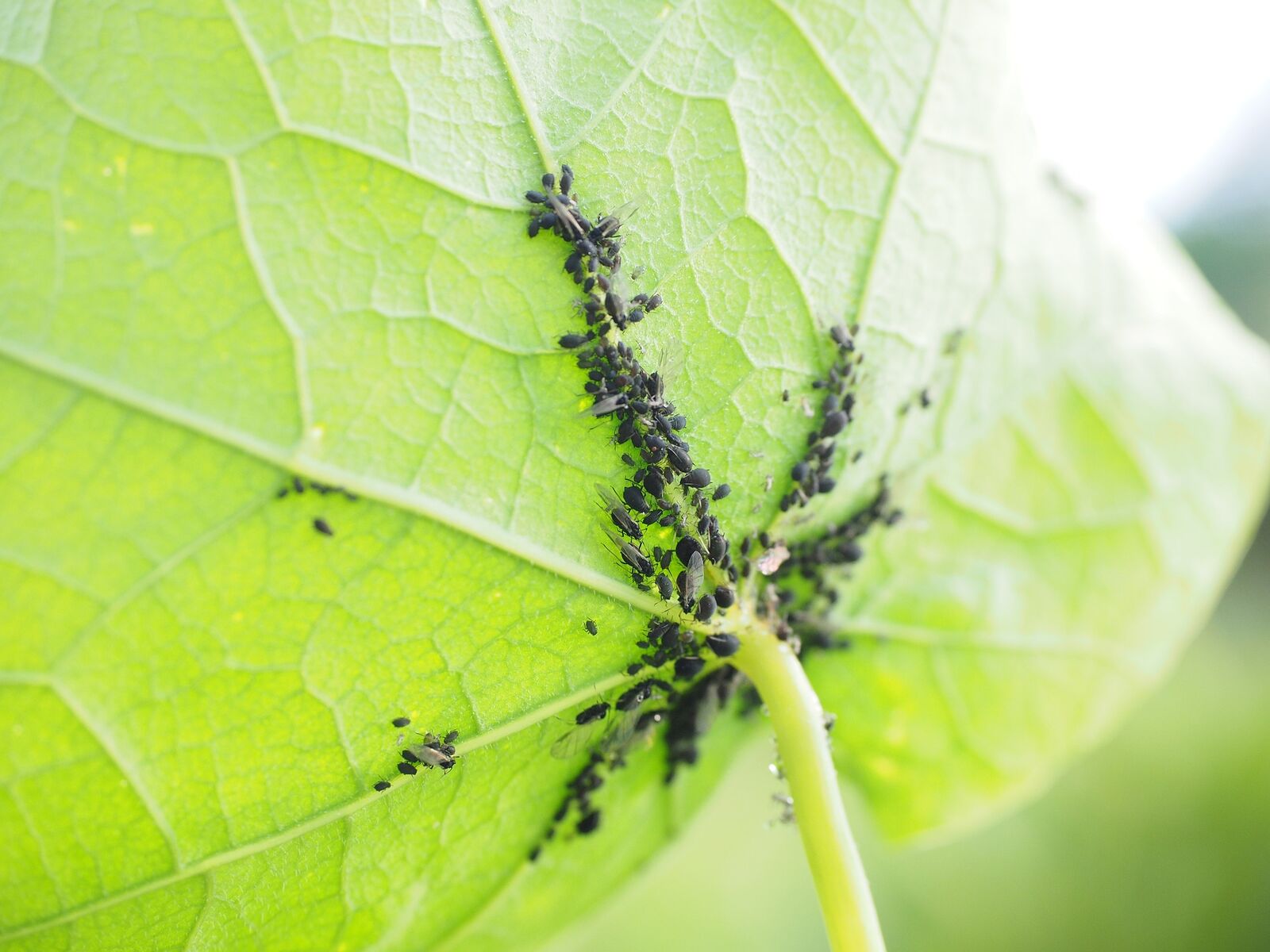
Some plant dips and teas can help to strengthen your plants and prevent aphids. However, you should note that plant dips and teas do not offer complete protection, but only support and, above all, have a preventative effect against aphids. We will introduce you to some of the liquids and teas below.
Horsetail Decoction to Strengthen Plants
Horsetail broth contains many nutrients and, above all, a lot of silicic acid. This helps your plants to build up cell tissue. As a result, they are better armed against pests and diseases. The decoction is particularly helpful against sucking insects such as aphids, as it makes it harder for them to reach the nutrients or sugars inside. Horsetail decoction is therefore primarily used to prevent infestation by aphids. If your plants are already infested, the effect is only slight. You can find out more about horsetail and its use in our article: Horsetail Decoction: Effect, Production and Use in the Garden.
Nettle Slurry Against Aphids
Nettle slurry also strengthens your plants by providing them with nutrients and enzymes that are quickly available to the plants. Therefore, like the horsetail decoction, it is used to prevent rather than combat aphids. Your plants' defenses are strengthened by the additional nutrients, making them less susceptible to pests and diseases. You can find out how to make and use nettle slurry in our article Making Nettle Slurry: The Natural Fertilizer. In addition to nettle slurry, broths made from rhubarb, tansy and bracken are also said to be effective against aphids (leave 1 kg/2.2 pd of leaves to infuse in 10 L/21 pt of water for 12 - 24 hours and spray the plants).
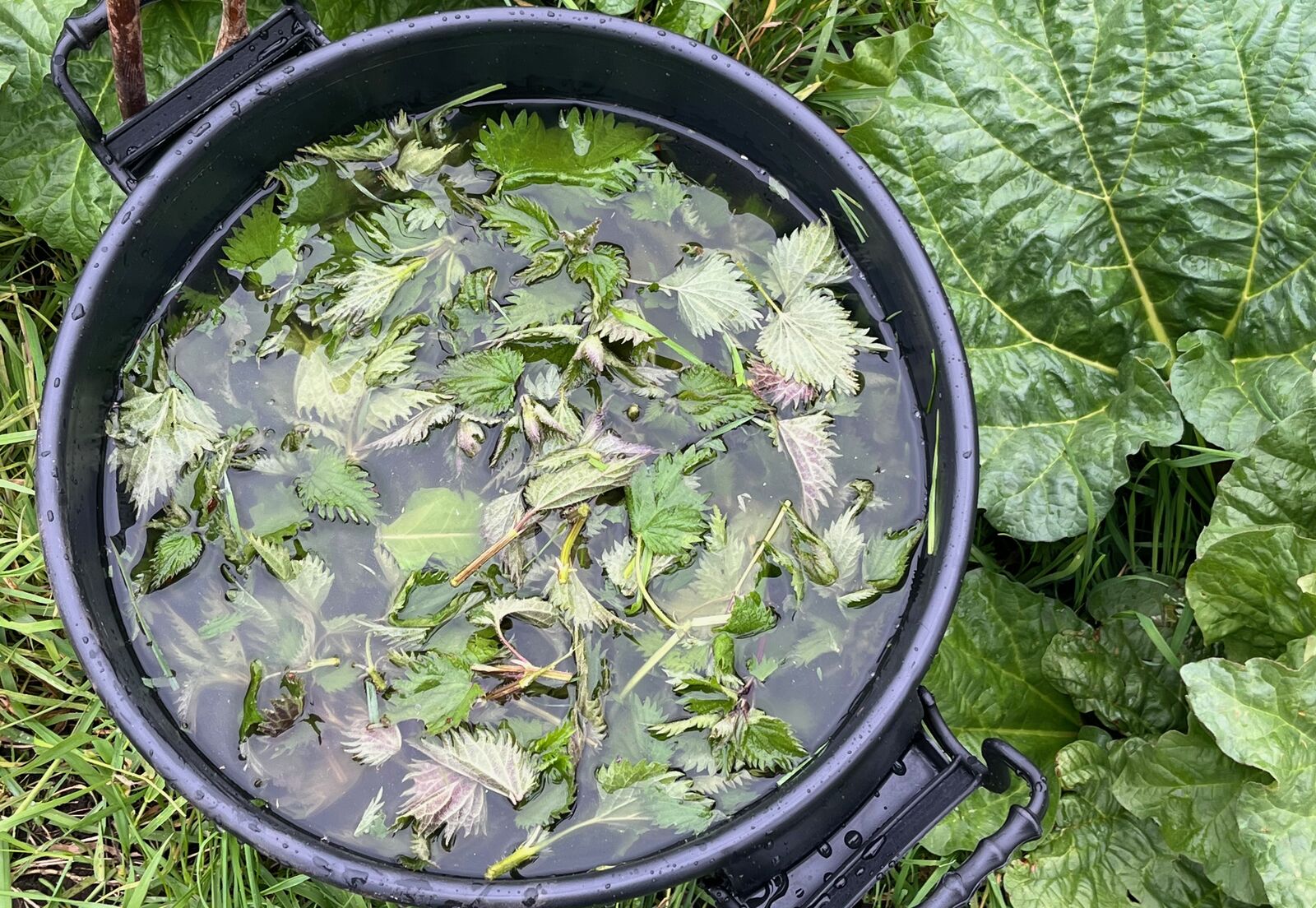
Black Tea Against Aphids
Spraying the infested areas with black tea is said to help against aphids. The tannins or essential oils are supposed to drive the aphids away or harm them. However, a single spraying is usually not enough and must therefore be repeated regularly (approx. every 3 - 4 days). The plants should also be sprayed again after heavy rainfall. Black tea is more effective as a remedy against aphids in cases of low infestation.
Tip: Other teas made from herbs such as oregano and wormwood or a broth made from garlic or onions are also said to help against aphids.
Fighting Aphids Naturally: Mixed Cultivation Against Aphids
In addition to plant dips for strengthening, a mixed culture can also have a preventative effect against aphids. Good plant companions and a selection of plants that deter aphids with their intense smell can help to better protect your plants from an infestation. Adequate plant spacing and good watering will also help to limit the spread of the pests. We will show you which plants help against aphids in the next sections.
Garlic Against Aphids
Garlic has a repellent effect on aphids due to its intense scent and thus also helps companion plants against an infestation. For example, you can plant garlic and strawberries together to protect your strawberries from infestation.
Herbs Against Aphids
Herbs in particular are welcome guests in a mixed culture. They protect against many pests and diseases. You can grow lavender under roses to protect them from aphids. Nasturtiums grow well under trees. Beans and savory are also often grown together in a mixed crop. In addition to other pests and diseases, savory also protects beans and potatoes from aphids. It is best to combine annual plants with other annual plants and perennial plants with each other.
Plants Against Aphids: Companion Planting Table
Here you will find a list of plants that help prevent aphids through their smell. Planting them nearby or a bed border with the plants ensures that the aphids tend to stay away from your plants.
| Vegetable Plants to Combat Aphids | Herbs to Combat Aphids | Other Plants to Combat Aphids |
|---|---|---|
| cress | savory | bracken (as a broth) |
| garlic | chervil | nettle (as stock) |
| rhubarb (as a broth) | lavendel | ivy (as a broth) |
| onions | oregano | nasturtium |
| parsley | tansy (as stock) | |
| peppermint | horse chestnut (as stock) | |
| rosmary | marigold | |
| sage | ||
| thyme | ||
| wormwood | ||
| hyssop |
Beneficial Insects Against Aphids: Who Eats Aphids?
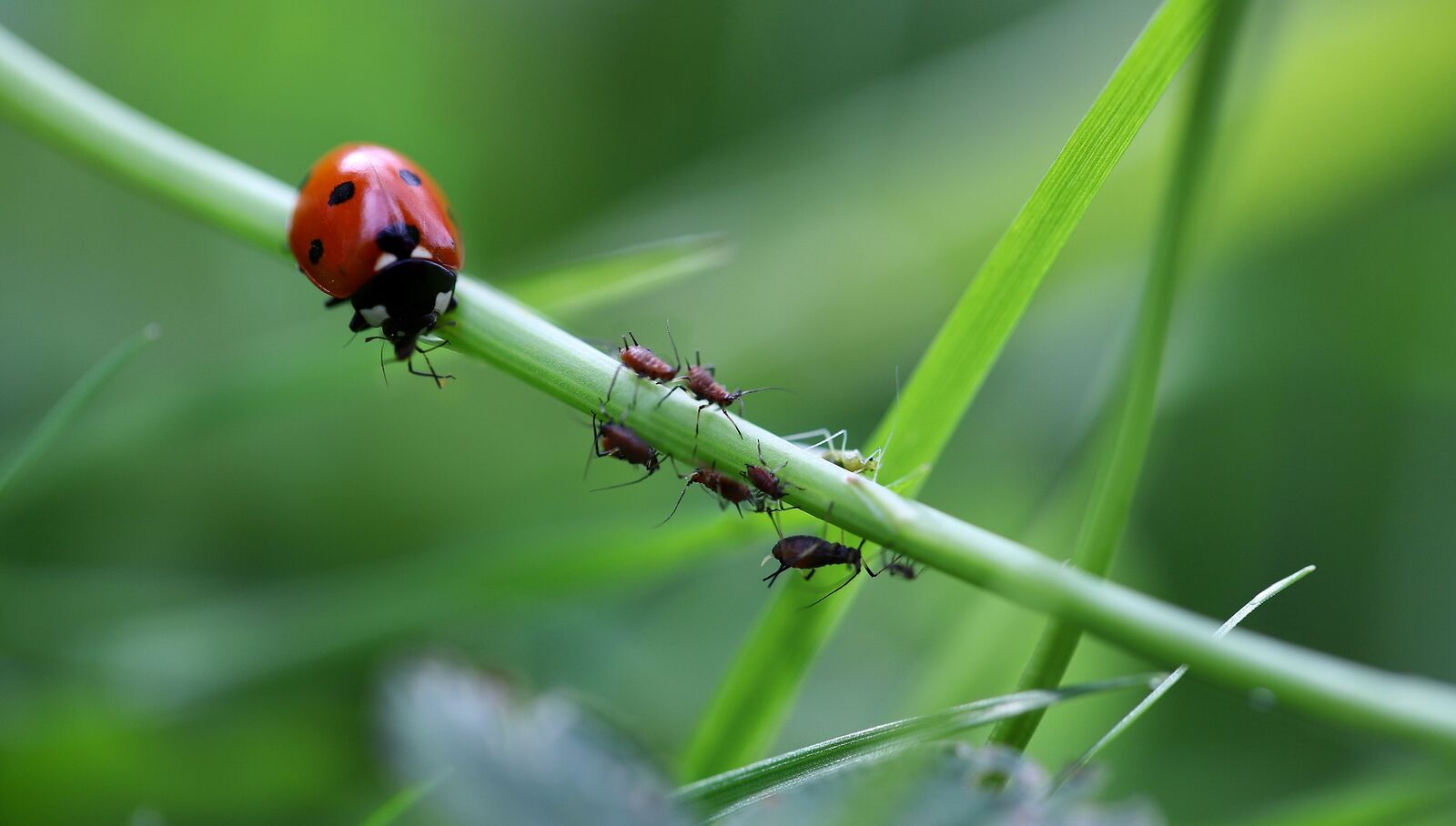
Some insects and other animals in your garden can also help you to combat an infestation of aphids. Lacewings, ladybugs, earwigs, parasitic wasps, hoverflies, spiders and many birds such as tits like to eat the unwanted guests. You can therefore help to encourage these beneficial insects by planting insect-friendly plants and creating a bird-friendly garden. You can find out more about this topic in our articles Beneficial Insects: Insects & Other Animals in the Garden and Ideas for a Bird-Friendly Garden.
Ladybugs Against Aphids
Ladybugs and especially their larvae love to feed on aphids. They can eat several hundred aphids a day and are therefore a very effective remedy against aphids. You can also buy ladybug larvae online. However, you should proceed with caution and try other methods of controlling aphids first. If you release the beneficial insects in your garden, you are interfering with the natural balance of your garden.
Lacewing Larvae as an Aid Against Aphids
Like ladybugs, lacewings and their larvae eat a lot of aphids every day. They are therefore also great helpers in controlling aphids. You can encourage these elegant insects by using insect hotels and insect-friendly plants in your garden. Just like ladybugs, you can buy their larvae online. However, the same applies here as for all beneficial insects: please proceed with caution when releasing beneficial insects in your garden. This disturbs the natural balance. Furthermore, if the animals do not find enough food and shelter in your garden, they will not stay with you for long. It is therefore more sustainable to support the animals in your garden naturally.
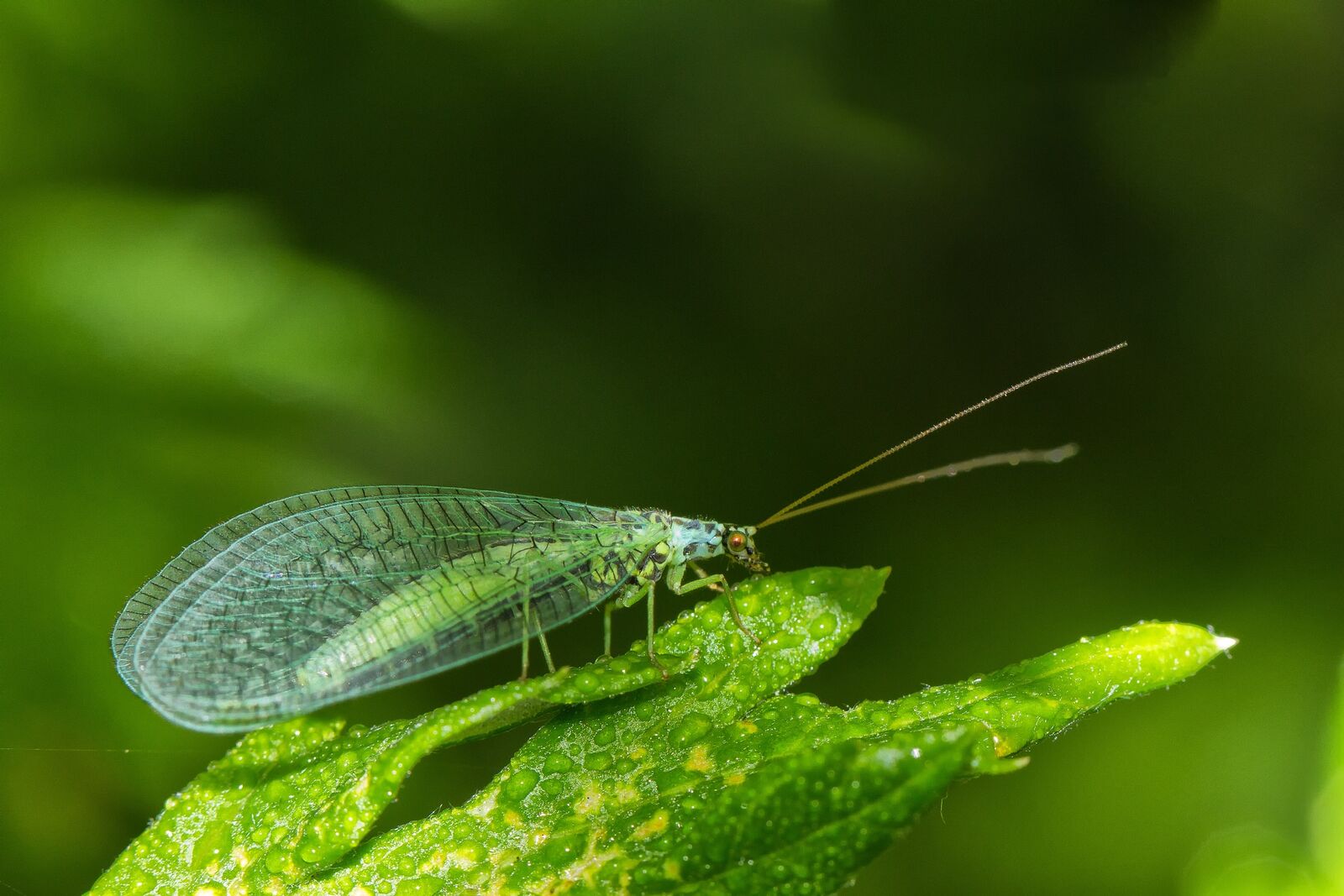
Do Wasps Eat Aphids?
Wasps are omnivores and also feed on aphids. Even if the insects are an unwelcome guest at our dinner table, they fulfill important functions in the garden to maintain the balance. As well as eating aphids and other pests, wasps also help pollinate plants. You can find out more about insect-friendly flowering plants in our article on Bee-Friendly Plants: Flowers, Trees & Co
If you have any questions or comments, please write to us at magazin@fryd.app. Would you like to receive helpful gardening tips all year round and plan your own beds optimally? Then register here or download the Fryd app for Android or iOS.
Fryd - your digital bed planner
Cover picture by LeneA on Pixabay.
Marielena
Current Topics in the Community
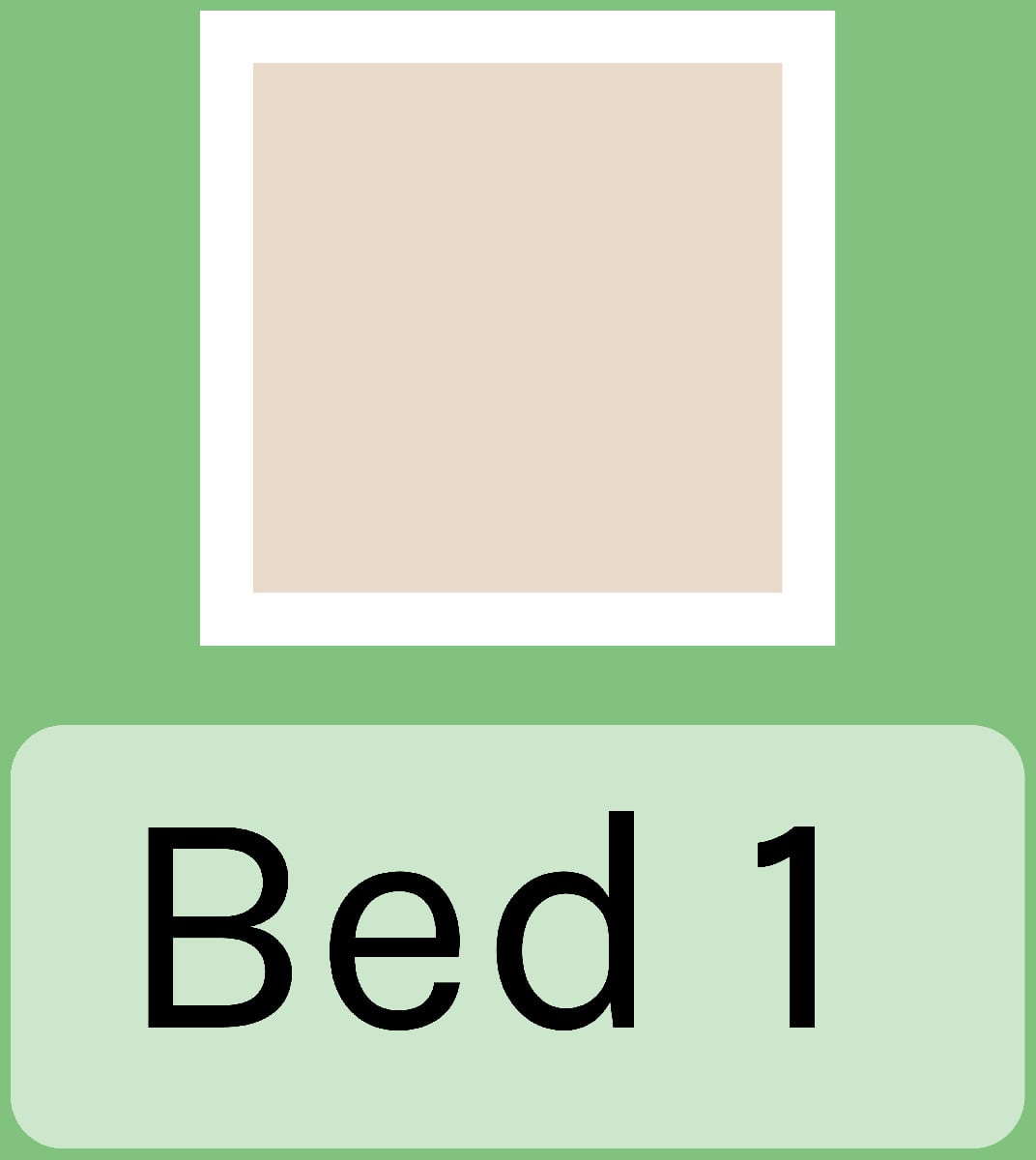
@Testi
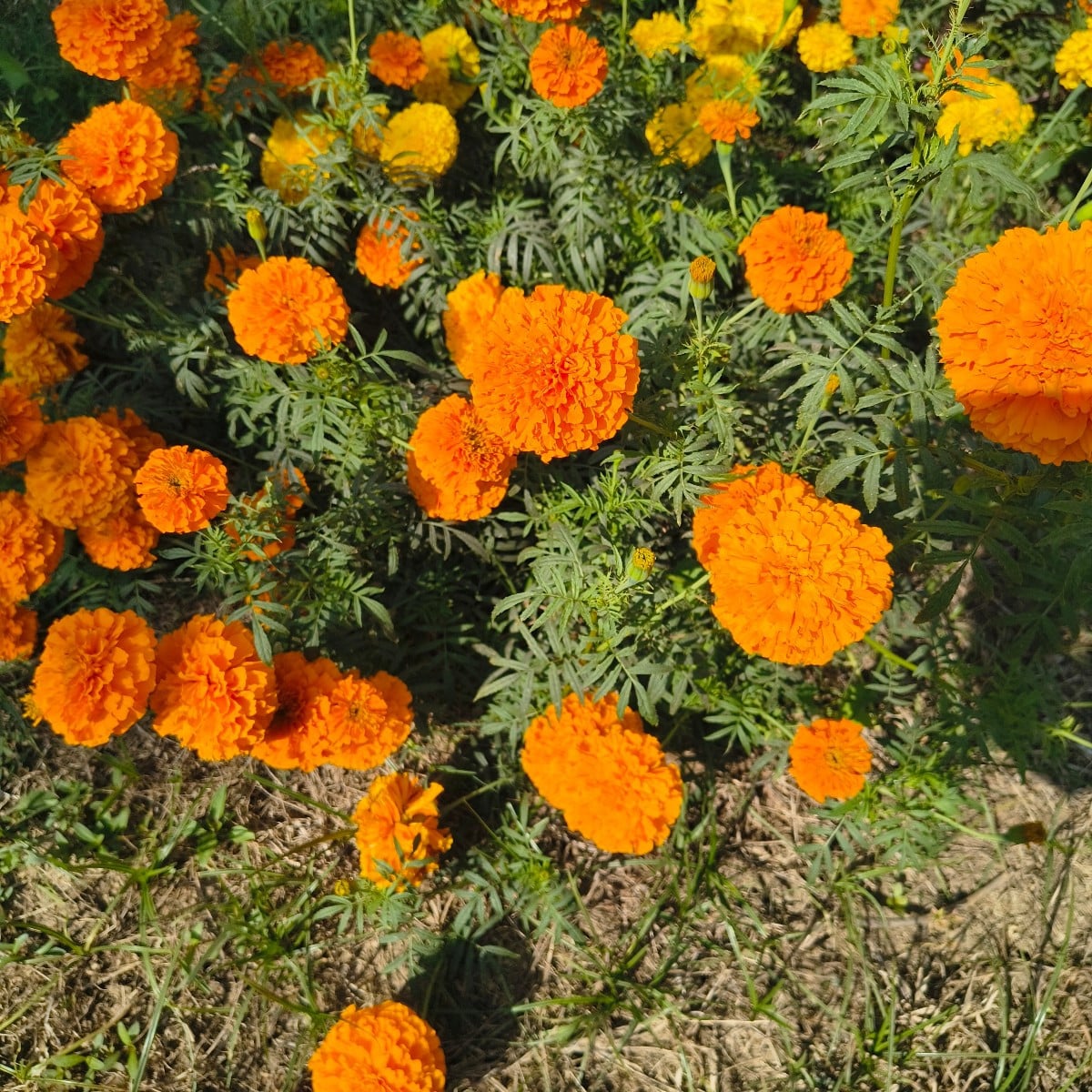
Liked 3 times
@🌱_Testing_💫_October,_2025 #paiduser #newpost #testfryd
Show 1 answer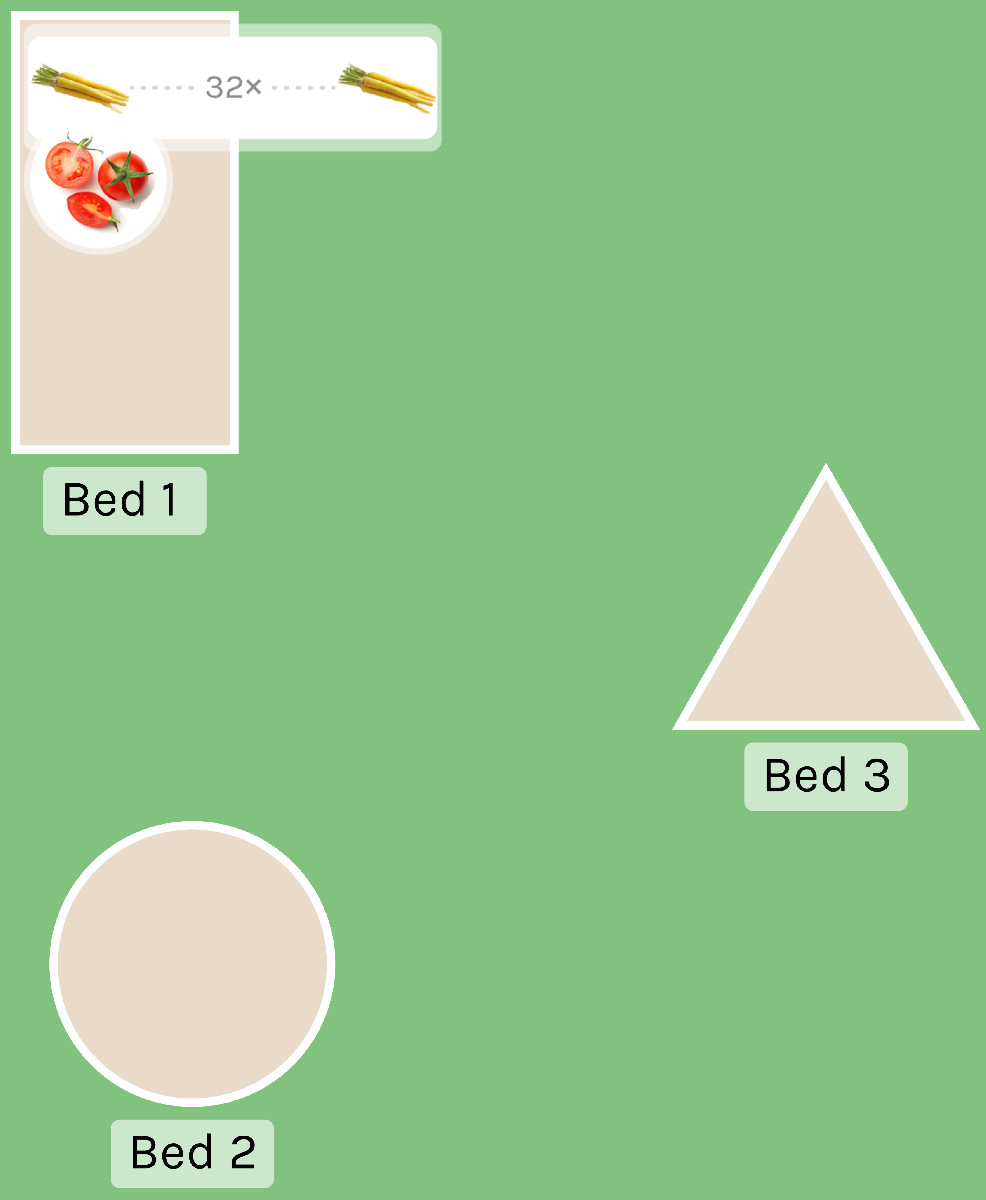
Liked 2 times
Show 2 answersPopular Articles

Companion Plants for Carrots: What (Not) to Plant With Carrots

Companion Plants for Celery : What (Not) to Plant With Celery?

Strawberry Types: List of Best Strawberry Varieties

Companion Planting With Strawberries: Companion Plants and Planting Plan

Basil Varieties & Types at a Glance

What to Plant With Cabbage: Good and Bad Companion Plants

Fertilizing Strawberries: Home Remedies & Natural Fertilizers at a Glance

Growing Sweet Potatoes: Tips on Cultivation & Companion Plants

Companion Plants for Kitchen Herbs: Chives, Parsley & Co

What Herbs Can Be Planted Together?
FAQ
Collecting and spraying with a strong jet of water on strong and stable plants is the quickest and most effective method of getting rid of aphids.
No, ants do not eat aphids, but actually enter into a symbiotic relationship with them. The aphids provide the ants with food in the form of honeydew and the ants protect them from predators in return.
Aphids do not like strong-smelling plants such as garlic or onions or herbs such as chervil, lavender, oregano, sage, rosemary, thyme and hyssop.
Are coffee grounds good against aphids?
Coffee grounds can be used as a mulching material and as a sprayed broth to prevent aphids.